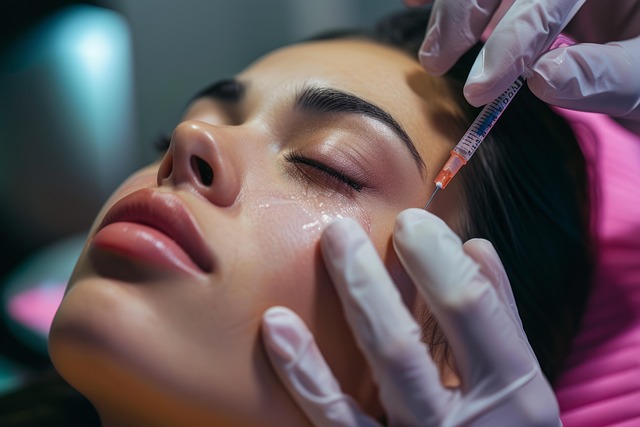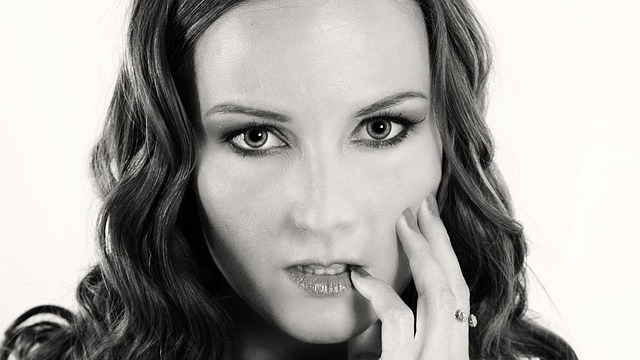Botox for facial contouring is a popular, non-surgical treatment using muscle relaxation to reduce wrinkles and redefine key facial features, especially around the chin and jawline. After a consultation with a qualified professional, a quick procedure involves injecting Botox into specific muscle groups, resulting in smoother skin and enhanced contours with minimal downtime. Proper aftercare ensures optimal results, while selecting an experienced provider is crucial to mitigate rare side effects and achieve natural-looking enhancements.
“Consider Botox for facial contouring? This comprehensive guide explores the benefits of using Botox for chin and jawline shaping. From understanding the science behind these treatments to choosing the right provider, we cover everything you need to know. Learn about the preparation process, what to expect during the procedure, recovery tips, potential side effects, and more. Discover how Botox can enhance your facial aesthetics with minimal downtime.”
Understanding Botox for Facial Contouring

Botox for facial contouring has emerged as a popular non-surgical aesthetic treatment, offering a subtle yet transformative approach to enhancing facial features. This procedure involves the strategic injection of Botox into specific muscle groups, primarily targeting the chin and jawline areas. By temporarily paralyzing these muscles, Botox can reduce the appearance of stubborn fat deposits, smoothen skin, and define facial contours.
The beauty of Botox for facial contouring lies in its ability to provide a natural-looking enhancement. It’s particularly effective for individuals seeking to refine their facial symmetry, improve jawline definition, or minimize the appearance of a double chin without undergoing surgery. This minimally invasive treatment offers quick recovery times and long-lasting results, making it an attractive option for those looking to enhance their facial aesthetics.
Benefits of Using Botox for Chin and Jawline

Botox for facial contouring, specifically targeting the chin and jawline, offers a non-invasive way to enhance facial aesthetics. By relaxing the muscles responsible for certain facial expressions, Botox can reduce the appearance of wrinkles, improve skin texture, and redefine facial features. This procedure is particularly popular among individuals seeking a subtle yet effective lift around the chin and jaw area, often considered key components in achieving a youthful and balanced face.
One of the significant advantages is its ability to provide long-lasting results with minimal downtime. Unlike surgical procedures, Botox allows patients to regain their regular activities quickly without the risks associated with anesthesia or incisions. Moreover, it offers a tailored approach, as the amount of Botox injected can be precise, ensuring natural-looking results and addressing specific concerns related to chin and jawline contouring.
The Science Behind Botox Treatments

Botox for facial contouring, particularly on the chin and jawline, is a non-surgical aesthetic treatment that has gained significant popularity due to its ability to enhance facial symmetry and reduce the appearance of age-related changes. The science behind Botox treatments involves the injection of a neurotoxin into specific muscle groups, temporarily paralyzing them and preventing contraction. This action smooths out dynamic lines and wrinkles, providing a more defined and sculpted look.
When used on the chin and jawline, Botox can help to minimize the appearance of jowls, tighten loose skin, and define facial contours. The procedure is typically quick and virtually painless, making it an attractive option for those seeking subtle yet effective results. With proper administration by a qualified professional, Botox for facial contouring offers a safe and effective way to achieve desirable aesthetic changes without incisions or prolonged recovery periods.
Preparing for Your Botox Procedure

Preparing for your Botox procedure for facial contouring begins with a consultation. During this time, your dermatologist or aesthetic specialist will assess your skin and discuss your goals. They’ll explain where the injections will be placed—typically along the jawline and chin to reduce the appearance of fatigure and enhance facial definition—and address any concerns you may have about the process. Make sure to inform them about any medications you’re taking, as certain drugs can affect treatment outcomes.
Prior to the procedure, avoid using retinol or other exfoliating products for a few days. On the day of your appointment, arrive well-rested and hydrated. Your specialist will clean your skin and inject Botox into specific points along the jawline and chin. It’s normal to feel slight discomfort during the process, but most patients find it manageable. After the treatment, you may experience mild swelling or bruising, which typically subsides within a few days.
What to Expect During the Treatment

During your Botox for facial contouring session, you can expect a range of sensations and outcomes. Initially, the healthcare provider will clean your skin and identify the specific areas to be treated—in this case, the chin and jawline. A fine needle is then used to inject tiny amounts of Botox into these muscles. You may experience mild discomfort or a pinching sensation during the injections, but most practitioners use topical anesthetics to minimize any pain.
After the procedure, it’s common to see some redness or swelling in the treated areas, which typically subsides within a few hours. It’s important to follow your doctor’s aftercare instructions, including avoiding strenuous activity and certain medications that can enhance bleeding. Within a week, you should start noticing subtle changes as the Botox begins to relax the targeted muscles, leading to improved facial contouring.
Recovery and Aftercare Tips

After your Botox for facial contouring procedure, it’s crucial to care for your skin and manage any side effects. You may experience some temporary redness, swelling, or mild discomfort in the treated areas – the chin and jawline. To ease these symptoms, apply a cold compress for 15-20 minutes several times a day. Avoid strenuous activities and excessive heat for the first 24 hours to prevent exacerbating inflammation.
Proper aftercare is essential for optimal results. Refrain from touching or rubbing the treated sites harshly. Keep your face clean and moisturized, using gentle, fragrance-free products recommended by your practitioner. Avoid makeup application on the chin and jawline for at least a day post-treatment. Remember, following these recovery tips will help ensure your Botox for facial contouring looks natural and lasts longer.
Potential Side Effects and Risks

While Botox for facial contouring, specifically targeting the chin and jawline, is a popular non-surgical procedure, it’s crucial to be aware of potential side effects and risks. Temporary redness, swelling, or bruising at the injection site are common and usually subside within a few days. In rare cases, patients may experience headaches, muscle weakness around the mouth, or difficulty swallowing, especially if the Botox is injected too close to vital nerves or muscles.
Longer-term risks are less frequent but include asymmetry in facial features, if not administered correctly, and potential degradation of results over time as the Botox wears off, typically after 3-6 months. It’s essential to consult with a qualified medical professional who can assess your specific needs and help mitigate these risks through proper technique and follow-up care.
Choosing the Right Provider for Botox Contouring

When considering Botox for facial contouring, selecting the right provider is paramount to achieving your desired results safely and effectively. It’s crucial to look beyond basic certifications and focus on specialized experience in Botox for chin and jawline contouring. Seek professionals who have a proven track record of successful procedures, with before-and-after testimonials available for review.
Reputation matters; choose providers with positive reviews and recommendations from satisfied clients. Additionally, ensure the practice adheres to sterile and safe injection protocols. A well-regarded aesthetic specialist or dermatologist with expertise in non-surgical facial contouring will offer personalized consultations, addressing your specific needs and concerns while guiding you through the process, from initial consultation to post-procedure care.
